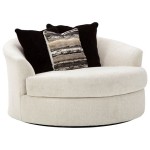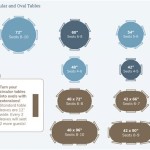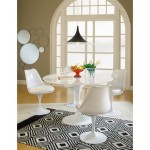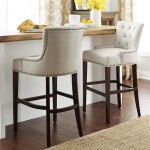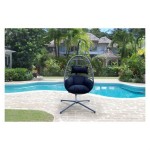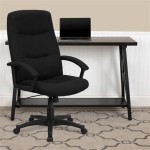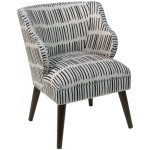Dining Chairs With Upholstered Seats: A Comprehensive Guide
Dining chairs with upholstered seats are a popular choice for homeowners seeking to enhance the comfort and aesthetics of their dining spaces. The addition of upholstery to a dining chair offers a myriad of benefits, ranging from increased seating comfort to enhanced design versatility. This article provides a comprehensive overview of dining chairs with upholstered seats, exploring their types, benefits, considerations when selecting them, and maintenance tips.
The term "upholstery" refers to the materials used to pad and cover furniture, typically involving fabric, padding (foam, batting, or springs), and a frame. In the context of dining chairs, upholstery is primarily applied to the seat, though it can extend to the backrest and arms depending on the chair's design. The selection of upholstery materials and the quality of construction significantly impact the comfort, durability, and overall appeal of the chair.
Types of Upholstered Dining Chairs
Dining chairs with upholstered seats come in a vast array of styles, each catering to different design preferences and functional needs. Understanding the different types available helps in making an informed decision that complements the existing décor and provides optimal comfort.
Fully Upholstered Chairs: These chairs feature upholstery on the seat, backrest, and often the arms. They offer maximum comfort and a luxurious feel, making them ideal for formal dining rooms or spaces where comfort is paramount. Fully upholstered chairs tend to be more expensive due to the increased material and labor involved in their construction.
Partially Upholstered Chairs: These chairs typically have an upholstered seat with a wooden or metal backrest. They offer a balance between comfort and visual appeal, making them a versatile choice for various dining room styles. The exposed frame element provides an opportunity to incorporate different design textures and materials.
Side Chairs: Side chairs are armless upholstered dining chairs, designed to be placed along the sides of the dining table. They offer a streamlined look and are suitable for smaller dining spaces where space is a constraint. They are generally more affordable than armchairs.
Armchairs: Armchairs feature armrests, providing added comfort and support. They are often placed at the head and foot of the dining table, serving as focal points. Upholstered armchairs generally occupy more space and are more suitable for larger dining areas.
Parsons Chairs: Parsons chairs are characterized by their simple, minimalist design. They typically feature a straight back and clean lines, making them a versatile choice for both formal and informal dining settings. Parsons chairs are often fully upholstered, offering a comfortable and elegant seating option.
Modern Upholstered Chairs: Modern upholstered dining chairs showcase contemporary designs, often incorporating unique shapes, materials, and colors. They are designed to make a statement and add a touch of sophistication to any dining space. Material choices can range from sleek leather to textured fabrics, often paired with metal framework.
Traditional Upholstered Chairs: Traditional upholstered dining chairs showcase classic designs, often featuring ornate details, such as carved wood accents, tufted upholstery, and nailhead trim. They evoke a sense of elegance and formality, making them suitable for traditional dining rooms.
Benefits of Choosing Upholstered Dining Chairs
Opting for dining chairs with upholstered seats offers several advantages compared to their non-upholstered counterparts. These benefits relate to comfort, aesthetics, and potentially, the longevity of the furniture itself.
Enhanced Comfort: The primary benefit of upholstered dining chairs is the increased comfort they provide. The padding in the seat and backrest allows for extended periods of comfortable seating, making them ideal for long dinners and social gatherings. The type of padding used, such as foam density or spring construction, will drastically influence the feel and support provided.
Aesthetic Appeal: Upholstery adds a touch of elegance and sophistication to dining chairs. The wide variety of fabric options allows homeowners to customize the chairs to match their existing décor and personal style. Different fabric textures, colors, and patterns can dramatically alter the overall appearance of a dining room.
Versatility in Design: Upholstered dining chairs are available in a vast range of styles, from traditional to modern, making them a versatile choice for any dining space. Upholstery allows for the incorporation of various textures, colors, and patterns, which can be easily updated to reflect changing design trends. The frame of the chair can be made of wood, metal, or a combination of both, further expanding the design possibilities.
Sound Absorption: Upholstery can help absorb sound in a dining room, creating a more comfortable and intimate atmosphere. This is particularly beneficial in spaces with hard surfaces, such as tile or hardwood floors, which tend to amplify noise.
Protection of the Chair Frame: Upholstery can provide a protective layer for the chair frame, helping to prevent scratches, dents, and other damage. This is especially beneficial for chairs with delicate or intricate wooden frames.
Considerations When Selecting Upholstered Dining Chairs
Choosing the right upholstered dining chairs requires careful consideration of various factors, including the dining room's style, the chair's intended use, the durability of the materials, and the budget. A well-informed decision ensures that the chosen chairs meet both aesthetic and functional requirements.
Style and Design: The style of the dining chairs should complement the overall design of the dining room. Consider the existing furniture, color scheme, and architectural features when selecting chairs. Whether the design leans towards traditional, modern, eclectic, or minimalist, the chairs should enhance the existing aesthetic.
Fabric Choice: The selection of fabric is crucial, as it impacts both the appearance and durability of the chairs. Consider factors such as stain resistance, wear and tear, and ease of cleaning. Common fabric options include:
- Linen: A natural fiber that is durable and breathable. It is prone to wrinkling and staining unless treated with a stain-resistant finish.
- Cotton: A comfortable and affordable option. Like linen, it is susceptible to staining and wrinkling.
- Polyester: A synthetic fiber that is durable, stain-resistant, and easy to clean. It is a good choice for households with children or pets.
- Velvet: A luxurious fabric with a soft, plush texture. It is relatively durable but may require professional cleaning.
- Leather: A durable and elegant option. Leather is easy to clean and maintain, but it can be expensive. Faux leather (PU leather) provides a cheaper, more easily maintained alternative, but may lack the longevity of real leather.
Frame Material: The chair frame should be sturdy and durable. Common frame materials include:
- Wood: A classic choice that offers warmth and beauty. Hardwoods, such as oak, maple, and walnut, are more durable than softwoods.
- Metal: A modern option that is strong and lightweight. Metal frames are often used in contemporary dining chairs.
- Combination: Some chairs feature a combination of wood and metal, offering a balance of aesthetics and durability.
Seat Height and Depth: The seat height should be appropriate for the dining table. Ideally, there should be approximately 12 inches between the seat and the table's underside. The seat depth should also be comfortable, allowing for ample legroom.
Padding and Support: The type and amount of padding affect the comfort of the chair. High-density foam provides better support and durability than low-density foam. Some chairs also feature spring systems for added comfort and support.
Budget: Upholstered dining chairs range in price from affordable to luxurious. Set a budget before beginning the search and stick to it. Consider the long-term value of the chairs, as investing in higher-quality chairs may be more cost-effective in the long run.
Maintenance: Consider the maintenance requirements of the chosen fabric and frame materials. Some fabrics require professional cleaning, while others can be easily spot-cleaned at home. The frame material may require polishing or other maintenance to keep it looking its best.
Maintenance and Care Tips
Proper maintenance and care are essential for prolonging the life of upholstered dining chairs and keeping them looking their best. Regular cleaning and preventative measures can help prevent stains, wear and tear, and other damage.
Regular Vacuuming: Vacuum upholstered dining chairs regularly to remove dust, dirt, and debris. Use a brush attachment to clean crevices and seams. This prevents the buildup of dirt that can grind into the fabric fibers, causing premature wear.
Spot Cleaning: Address spills and stains immediately to prevent them from setting into the fabric. Use a clean cloth to blot the spill, working from the outside in. Avoid rubbing, as this can spread the stain.
Professional Cleaning: Consider professional cleaning for upholstered dining chairs every one to two years, or more frequently if they are heavily used. Professional cleaning can remove deep-seated dirt and stains that are difficult to remove at home.
Fabric Protection: Apply a fabric protector to upholstered dining chairs to help repel stains and spills. Fabric protectors create a barrier that prevents liquids from penetrating the fabric fibers.
Sunlight Protection: Avoid placing upholstered dining chairs in direct sunlight, as this can cause the fabric to fade or discolor. Use curtains or blinds to protect the chairs from the sun's harmful rays. Regularly rotating the chairs can help to ensure even wear and fading throughout.
Avoid Sharp Objects: Be careful to avoid sharp objects that could snag or tear the upholstery fabric. Keep pets' claws trimmed to prevent damage. Avoid placing heavy objects on the chairs that could cause the padding to compress.
Regular Inspection: Inspect upholstered dining chairs regularly for signs of wear and tear, such as loose seams, worn fabric, or damaged frames. Addressing these issues promptly can prevent them from escalating into more significant problems. Regularly check the stability of the frame and tighten any loose screws or bolts.
By carefully selecting and properly maintaining upholstered dining chairs, homeowners can enjoy the benefits of enhanced comfort, style, and durability for years to come. A bit of careful thought and regular maintenance will ensure the chairs remain a valuable and aesthetically pleasing addition to the dining space.

Realyn Chipped White Ladder Back Upholstered Dining Chair Cincinnati Overstock Warehouse

Amish Stellar Open Back Upholstered Dining Chair

Cardell Dining Chair

Artemis Dining Side Chair

Landon Acorn Wood Dining Chairs With Upholstered Seat 2 Piece

Fully Upholstered Espresso Wood Round Back Restaurant Chair With Nailhead Trim

Unbranded Modern Retro Gray Linen Dining Chairs With Bentwood Back Upholstered Seat Metal Legs Adjustable Foot Set Of 2 Xt W1143p194146

Crestmore Dining Chair Upholstered Seat Set Of 2 Walnut

Upholstered Dining Chairs With Metal Legs And High Density Foam Tufted Chair Nailed Trim Armrest Backrest Velvet Padded

Espresso Wood Round Back Restaurant Chair With Upholstered Seat

